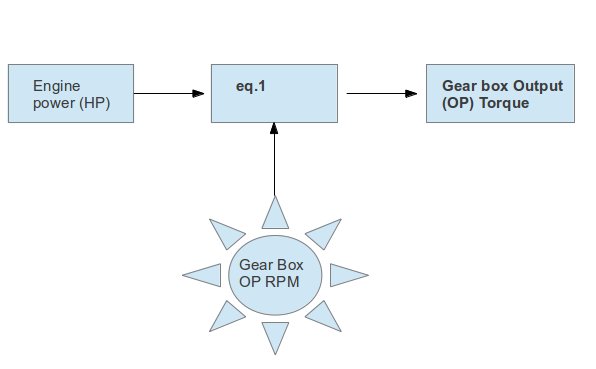The term torque is, i feel, somewhat neglected between the two engineering terms – horsepower and torque. While talking about a electric motor or an IC engine or a gear box, people talks more about the output power than torque probably because the term power comes closer to energy.
Though, the following formula can be used for the torque to horse power conversion and vice versa:
Horsepower (in HP) = {2*3.14*Speed(in RPM) * Torque (in N-M)}/60000……………….eq.1
but, in actual practice, the term torque is being physically measured from test setup of the prime movers (motor, engine ) or gearbox and then converted to the term power by using the above equation.
Now, if you observe the above equation you will see another important term that is speed or RPM. If you have happened to see the torque or power curve of an engine you know the X-axis of the graph always represent the speed.
What is the impact of Speed on torque and power?
Both the term will increase with rpm up to certain point and then further increase in speed will cause decrease for both terms. However, the peak point for torque will come for relatively lower rpm than HP. The reason behind this is – at the point of peak torque, the rpm gets so high that the valves and air tubes become insufficient to meet the high demand of air, as a result torque value starts declining. But, as speed is still high so the product of speed and torque remains high, so, the horse power keeps climbing for some more time before start declining.
What happened to the output of a gear box connected to a engine or motor?
The ratio of a gear box or transmission system factors the available input torque. Or in other words, if a gearbox increases the speed of the output shaft with respect to the input shaft, then, it will proportionately reduce the output torque with respect to the input torque.

For finding the output torque of the gearbox, you have to again take the help of the equation eq.1, feed the engine or motor HP and outputspeed of the gearbox to find out the output torque.
Hi, I am Shibashis, a blogger by passion and an engineer by profession. I have written most of the articles for mechGuru.com. For more than a decades i am closely associated with the engineering design/manufacturing simulation technologies. I am a self taught code hobbyist, presently in love with Python (Open CV / ML / Data Science /AWS -3000+ lines, 400+ hrs. )

In a motor connected with a gearbox,please let me know where the valve and tubes are.I can not understand why in the motor and gearbox,torque decreased with increased rpm.
From the torque/power/rpm equation above (eq.1), it can be seen that for constant power (hp), torque is inversely proportional to the rpm.
Hence, torque decreases with increased RPM.
Thank you for your valuable advice.What I can not clearly understand is about the concept of the matter.You are perfectly correct from the equation but nonetheless I want to get know the physics behind this equation.The meaning of valve and tube is not clear for me.Please kindly explain in more details.
Please all share your valuable advice.
Hi,
As per eq.1 the LOWER the speed,the HIGHER the torque.I am confused why soft starter is used in many machines while the torque at lower speed is higher than high speed.With soft starter it takes much time to reach the final speed and as per the eq.1 we have higher torque.We must go to final speed as soon as possible to experience lower toque while soft starter causes higher time to receive final speed.Why soft starter is used?